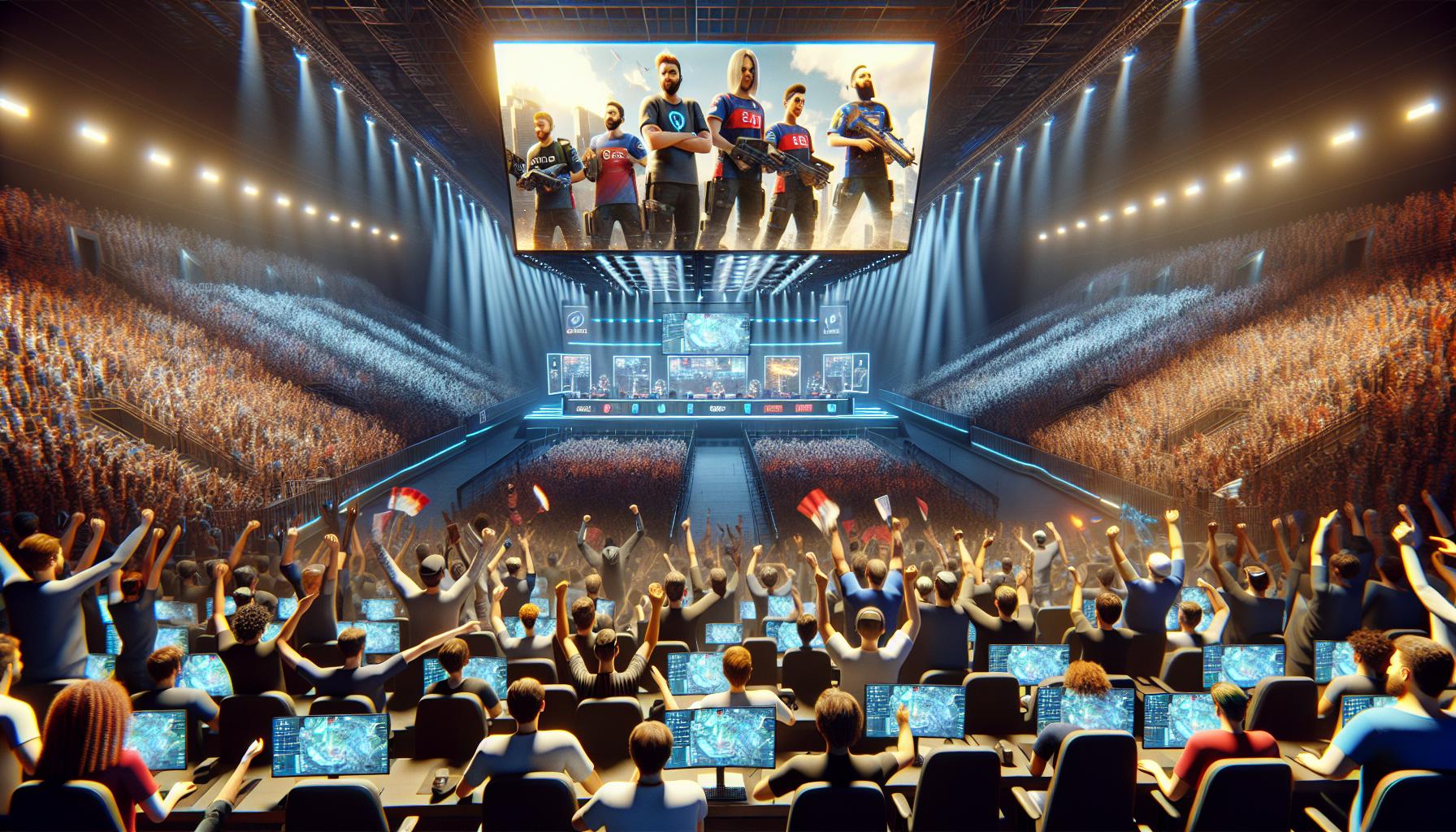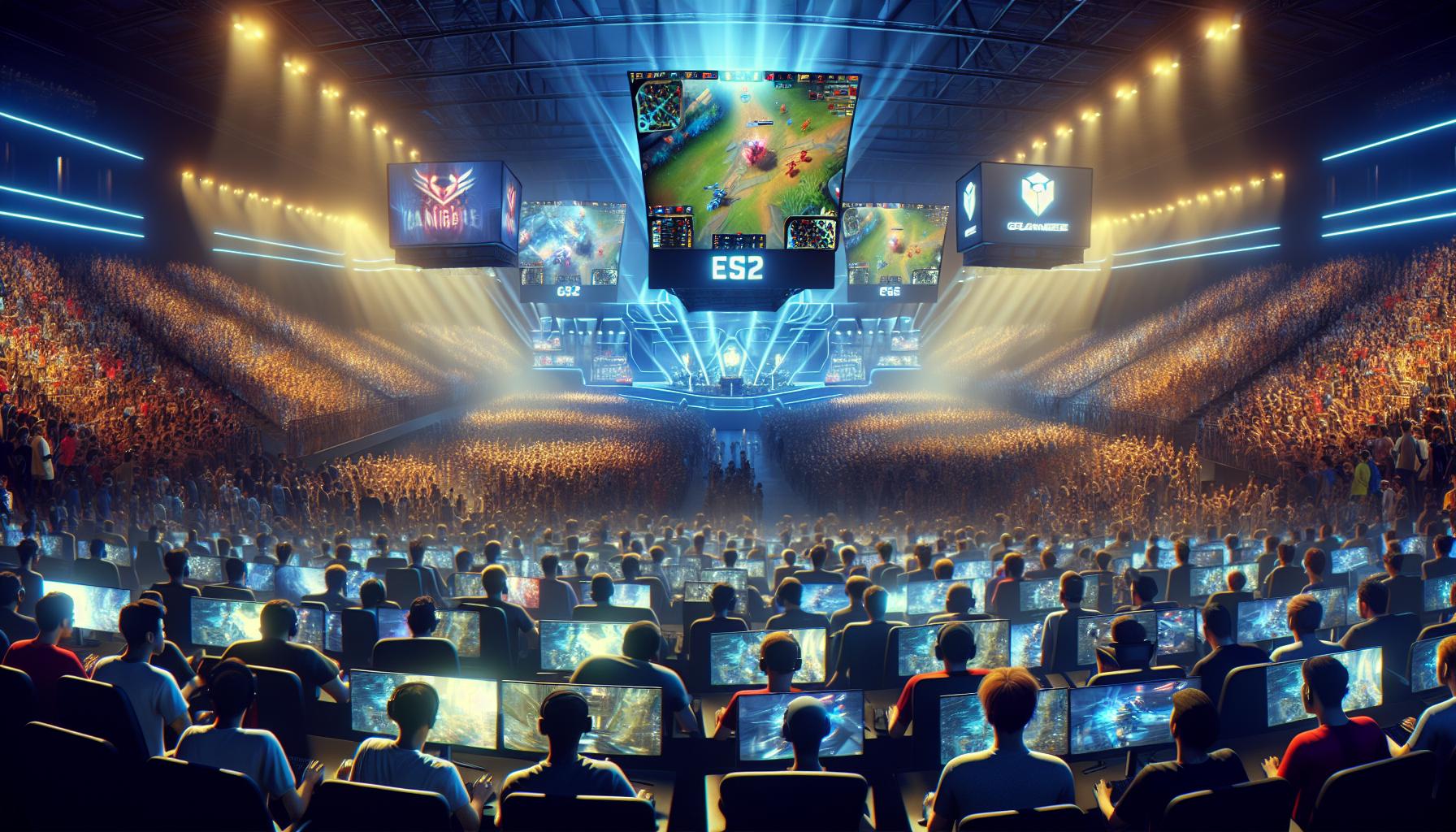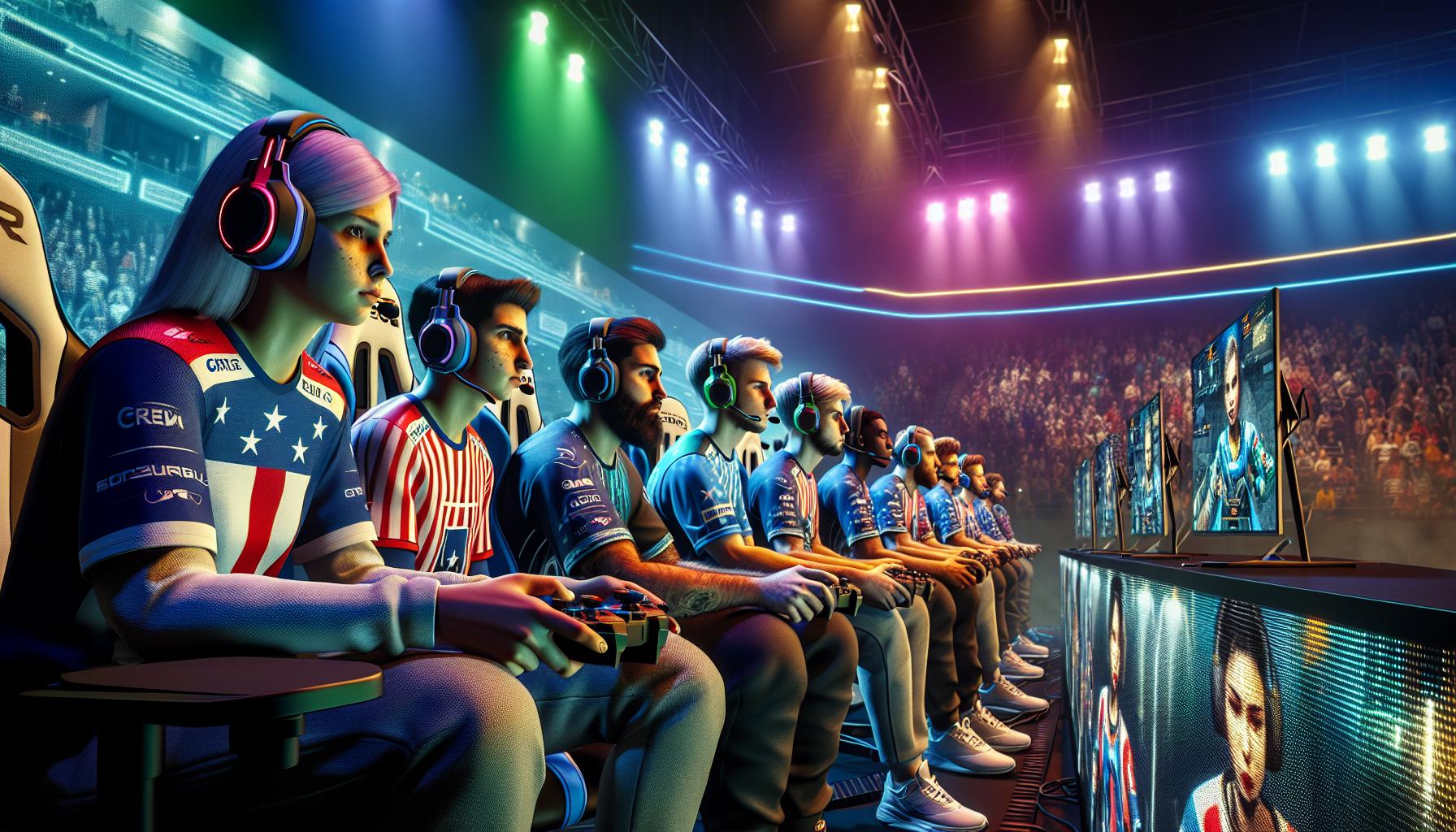Key Takeaways
- Evolution of Esports: Esports has transformed from small, informal gatherings to a major global entertainment industry, with structured competitions and professional players.
- Significant Tournaments: Landmark events like the World Cyber Games and Electronic Sports World Cup have established esports as a legitimate competitive space, significantly increasing prize pools and participation.
- Streaming Revolution: Platforms like Twitch have changed how fans engage with esports, allowing real-time interaction and expanding the viewership base beyond traditional media.
- Impact of Game Genres: The rise of popular genres such as MOBAs and FPS games has shaped the competitive landscape, with titles like Dota 2 and League of Legends driving large-scale tournaments and community engagement.
- Mainstream Acceptance: Media coverage and corporate sponsorships have helped legitimize esports, transforming public perception and establishing it as a viable career path for aspiring gamers.
- Infrastructure Development: The creation of professional leagues and robust organizations has enhanced the competitive structure of esports, attracting investment and fostering talent within the industry.
Esports has transformed from niche competitions in basements to a global phenomenon captivating millions. As gaming continues to evolve, certain events have shaped its trajectory, defining moments that not only elevated the industry but also changed the way we engage with competitive play.
From the first televised tournaments to record-breaking prize pools, these milestones have marked significant shifts in perception and participation. They highlight how esports has become a legitimate form of entertainment and a career path for aspiring players worldwide. Understanding these pivotal events provides insight into the dynamic landscape of esports today.
Important Events in Esports History
Esports began as an informal gathering centered around competitive gaming, slowly evolving into a structured environment with dedicated communities and tournaments.
Formation of Competitive Gaming Communities
Competitive gaming communities emerged in the late 1970s and early 1980s, fueled by arcade games like “Space Invaders” and “Pac-Man.” Gamers formed groups to share high scores and strategies, fostering an environment of friendly competition. With the rise of personal computers in the 1990s, communities expanded through online platforms and bulletin boards, allowing players to connect across geographical boundaries. Notable examples include the formation of clans for “Doom” and “Quake,” which laid the groundwork for organized competitive play.
First Documented Tournaments
The first documented esports tournament took place in 1972 at Stanford University, where players competed in “Spacewar!” The event attracted a modest audience of about 200 participants. In 1980, Atari hosted the “Space Invaders Championship,” which became a landmark event with over 10,000 entrants nationwide. These early tournaments set the stage for future competitive gaming, highlighting the potential for large-scale, community-driven events. The success of these competitions encouraged developers and organizers to explore further opportunities within the esports landscape.
Rise of Esports in the 2000s

The 2000s marked a transformative period for esports, characterized by the emergence of significant tournaments and the advent of streaming platforms. These developments played a crucial role in establishing esports as a mainstream entertainment option.
Major Tournaments and Their Impact
Major tournaments became pivotal events in the esports calendar during the 2000s. The launch of the World Cyber Games (WCG) in 2000 set a precedent for international competition, attracting players from various countries and spotlighting popular titles like “Counter-Strike” and “Warcraft III.” The Electronic Sports World Cup (ESWC) followed in 2003, further legitimizing esports on a global scale.
Prize pools for these tournaments skyrocketed. For instance, the WCG’s initial prize pool started at $150,000, and by 2008, it had increased to $400,000. This increase in financial stakes drew professional players and sponsors, further enhancing the competitive nature of events. Such tournaments fostered a sense of community and awareness, cultivating a dedicated fanbase that supported players and teams.
The Influence of Streaming Platforms
Streaming platforms revolutionized esports viewership, bringing competitions directly to fans. Platforms like Twitch, launched in 2011, allowed gamers to broadcast gameplay live, creating a new form of entertainment. While Twitch gained prominence later in the decade, its influence began building during this period with similar services like Own3d and Justin.tv providing early streaming options.
By 2006, professional gamers reached audiences of over 100,000 viewers during live broadcasts, indicating a growing demand for real-time competition content. Streaming also facilitated interaction between players and fans, transforming spectatorship into a participatory experience. Viewers engaged with content creators, further solidifying the social aspect of esports.
The rise of sponsorships and advertising revenue followed rapidly, with companies investing millions in player promotions and tournament broadcasts. The combination of major tournaments and innovative streaming platforms cemented the foundation for esports’ future growth, enabling it to gain traction in popular culture.
The Evolution of Game Titles in Esports

Game titles significantly influenced the trajectory of esports, shaping its competitive landscape and player communities. The rise of specific genres like MOBAs and FPS games played a critical role in defining modern esports.
Rise of MOBAs and FPS Games
MOBAs (Multiplayer Online Battle Arenas) and FPS (First-Person Shooter) games emerged as dominant genres in the esports arena. Dota 2, released in 2013, revolutionized competitive gaming with its complex mechanics and strategic depth, leading to the establishment of The International, which features multi-million dollar prize pools. Games like League of Legends followed suit, presenting team-based gameplay that attracted a massive player base and extensive viewership. Similarly, FPS titles like Counter-Strike and Call of Duty gained popularity with their fast-paced action and strategic elements. Events such as the ESL Pro League and Major Championships solidified these genres’ presence, creating dedicated fan bases and robust competitive circuits.
Key Game Releases That Shaped the Scene
Several game releases marked pivotal shifts in the esports landscape. “StarCraft: Brood War,” released in 1998, set the stage for competitive strategy gameplay, with South Korea embracing it as a national sport. “Counter-Strike” (2000) established the groundwork for FPS esports, spawning numerous tournaments and professional leagues. “Dota 2” (2013) and “League of Legends” (2009) redefined team-based competition, each launching large-scale tournaments that attracted global attention and investment. Other titles, such as “Overwatch” (2016) and “Fortnite” (2017), expanded the esports scene further, appealing to diverse audiences and cultivating a new generation of competitors. Each release not only heightened competition but also encouraged viewer engagement through streaming platforms and social media, further embedding esports in mainstream culture.
The Mainstream Acceptance of Esports

The acceptance of esports has surged, transforming competitive gaming into a recognized and thriving industry. Sponsorships, media coverage, and changes in public perception have significantly contributed to this evolution.
Sponsorships and Partnerships
Sponsorships and partnerships play a crucial role in the financial growth of esports. Corporations such as Coca-Cola, Intel, and Red Bull invest heavily in esports teams and tournaments, fostering a connection between traditional sports marketing and the gaming community. These sponsorships lead to increased prize pools, enhancing competition quality and attracting top players. Additionally, partnerships with major gaming organizations help facilitate marketing campaigns aimed at broadening esports’ reach beyond core gamers. The collaboration among brands, broadcasting networks, and game developers also strengthens the overall credibility of esports as an industry.
Media Coverage and Public Perception
Media coverage has significantly shifted the public’s perception of esports. Major networks such as ESPN and TNT have begun broadcasting esports events, drawing in mainstream audiences and legitimizing competitive gaming. Coverage in traditional sports media highlights the skill and strategy involved in esports, reinforcing its status as a competitive sport. Furthermore, documentaries and articles spotlighting esports athletes humanize them and connect them with wider audiences. Increased visibility in mainstream media contributes to a more favorable perception of esports, transforming it into a legitimate career path for aspiring gamers across the globe.
Milestones in Esports Infrastructure
Esports infrastructure has evolved significantly, shaping competitive gaming into a prominent industry. Key developments in professional leagues and organizations represent crucial milestones in this progression.
Establishment of Professional Leagues
Professional leagues serve as a backbone for structured competition in esports. Initial leagues emerged in the early 2000s, laying the foundation for future growth. The launch of Major League Gaming (MLG) in 2002 marked a pivotal moment, offering a set structure for competitions in titles like “Halo” and “Counter-Strike.” MLG’s organization of tournaments showcased the viability of esports as a professional endeavor. Additionally, leagues such as the ESL Pro League, established in 2015, further solidified competitive standards and increased player participation.
The introduction of league formats, like the Overwatch League in 2018, transformed traditional tournament structures. Franchise models provided financial stability to teams and stable competition schedules, making it more appealing for sponsors and viewers. This shift towards a professional league system positioned esports alongside traditional sports, enhancing legitimacy and fostering international engagement.
Growth of Esports Organizations
Esports organizations have played a key role in establishing viable infrastructures for competitive gaming. Teams such as Team Liquid, founded in 2000, were among the first to create stable rosters, recruit talented players, and compete in global competitions. Their establishment marked the beginning of professionalization within the community.
Sponsorship deals contributed significantly to growth. In 2020, organizations like FaZe Clan and 100 Thieves attracted partnerships with major brands, strengthening their financial resources and visibility. These organizations now offer not only competitive teams but also content creation avenues, targeting broader audiences and diversifying engagement strategies.
Furthermore, the rise of dedicated esports facilities reflects infrastructure advancements. Locations like the Blizzard Arena in Los Angeles serve as venues for high-profile tournaments and regular league play, creating opportunities for fan interaction and further legitimizing the industry. This growth trend underscores how organizations are central to the thriving landscape of esports, cultivating talent and driving innovation.
Esports Has Undeniably Transformed
Esports has undeniably transformed into a powerful global phenomenon. The journey from informal competitions to a recognized industry showcases the dedication of players, organizers, and fans alike. Each milestone has contributed to a vibrant ecosystem that continues to evolve and expand.
As esports gains mainstream acceptance, its future looks promising. The ongoing innovations in technology and infrastructure will likely drive further growth. With major corporations investing in the scene and new games emerging, esports is poised to capture even more attention and talent in the years to come. The impact of these important events will resonate for generations, shaping the landscape of competitive gaming.